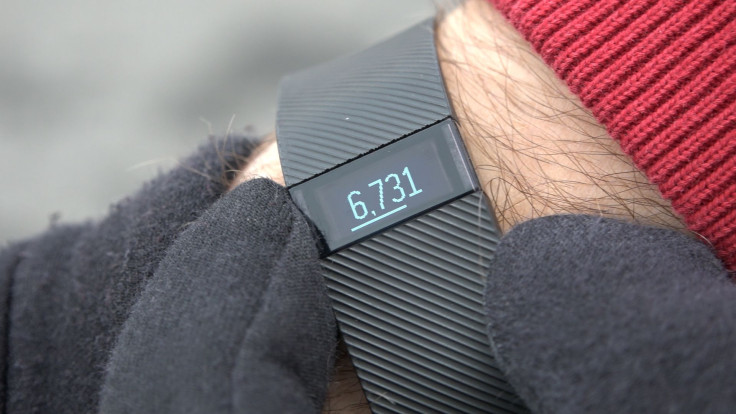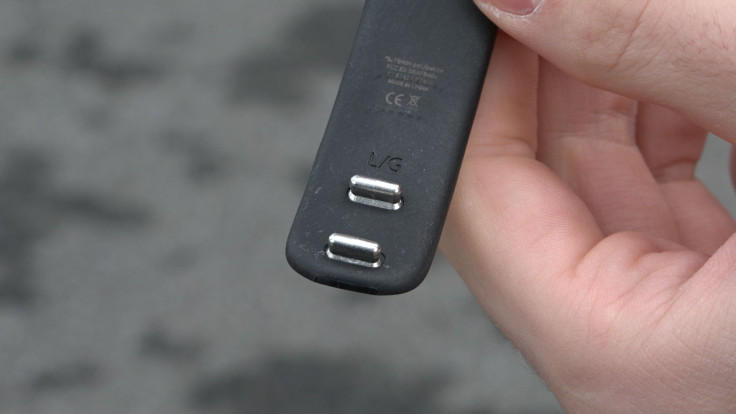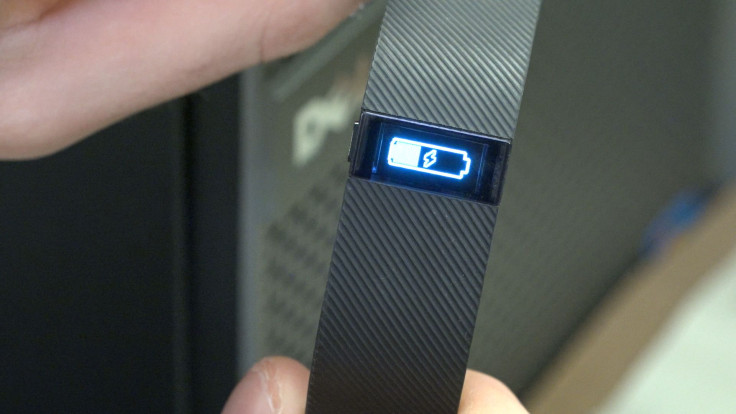Fitbit 'Charge' Review: Latest Fitness Tracker An Improvement Over Recalled 'Force'

These days, it’s impossible to talk about fitness tech without mentioning Fitbit. Right now, it claims more than two-thirds of the fitness band market share, and recently launched a massive ad campaign. This band is one of the “new” products Fitbit is pushing: the Charge.
Comfort / Design
The Charge is the direct replacement for the Force, Fitbit’s beleaguered tracker, much tarred by reports of skin irritation. The Charge doesn’t look that different from the Force, but it uses some different materials. (Suffice it to say, I haven’t had any redness on my wrist.) In fact, the Charge is actually rather comfortable to wear; the soft touch rubber on the underside sits smoothly and never catches on hair. The band is the same sort of design you’ll see on most Fitbit products: metal pegs that push in and lock to the rubber band. It’s a bit annoying to take on and off, but this is less of a problem as the rubber wears in a bit.

On top, the Charge has a discreet, slotted and textured design. In black, it fits in with casual clothing well, though this isn’t something you’ll want to pair with a suit. The built-in OLED screen is bright and clear, even in direct sun. It’s not exactly scratch-resistant, though. There’s a small button just left of the screen that switches among various settings and data readouts on the Charge; it sticks occasionally, but it’s in a good spot.
The Charge isn’t waterproof, though it is water-resistant; the exposed charging port on the inside of the band drowns the idea of showering or swimming, but the band will handle sweat just fine.
App
Fitbit’s app is slightly updated for the new devices. It retains the same basic layout seen in our review of the Flex, and that’s not necessarily a bad thing. It lays all of the most essential information like steps, calories burned, and active minutes right on the first page, with each day getting its own screen. The big improvements for this generation? Automatic sleep tracking, which is a nice touch -- the Charge assumes that, when you lie still for a few minutes, you’ve gone to sleep -- it turned out to be pretty accurate so far as time spent snoozing is concerned, though it’s hard to say exactly how accurate the intricate details of the sleep data are.

There’s also easier food tracking, which basically boils down to a larger library of pre-entered meals and food items. You have to enter the name of whatever you’re eating to get its nutritional facts, which is honestly still too long of a process for anyone but the most diligent among us to stick with. Jawbone had the right idea, letting users take pictures of their food to store data that way.
It’s largely the same otherwise, aside from things like “flights of stairs climbed”; what the Charge does is use an altimeter to work out that you’re going up or down. From there, it counts a “flight” every eight to 10 steps. It’s decently consistent when tracking real-world stairs, but it’s completely thrown off by a Stairmaster.
Performance
The Charge does a decent job accurately recording steps. Like the Flex, it tends to read slightly conservatively; on a half-mile track test, the Fitbit read .46 miles. It's not a huge discrepancy, but it is there.
You can also actively log a workout on the Charge by pressing and holding the small button next to the OLED screen. It’s geared toward walking and running, so don’t expect a detailed breakdown of weightlifting sessions. All the stats that ARE tracked can be viewed in the app, but the most major can be scrolled through on the Charge itself. The order can be rearranged, but you can only choose from step count, distance, calories, and flights of stairs climbed. There’s a clock on top of all that, and a programmable silent alarm to wake you up in the morning.

The app gives you daily goals to achieve, along with daily challenges if you seek them out, but there’s no special coaching or encouragement when you turn it on.
The Charge went about eight days on each full battery, and it took only 30 minutes to be brought back to 100 percent. That’s definitely a livable life span, even if the charging port and cable are awkward.

Conclusion
As a direct replacement for the Force, the Charge does everything it needs to do. The Fitbit app could still use a little tweaking, but it’s still a good experience. About the only thing missing from the Charge is a heart rate monitor (the Charge HR will have one, for $30 more) , but at $129 it’s a solid choice.
© Copyright IBTimes 2025. All rights reserved.




















